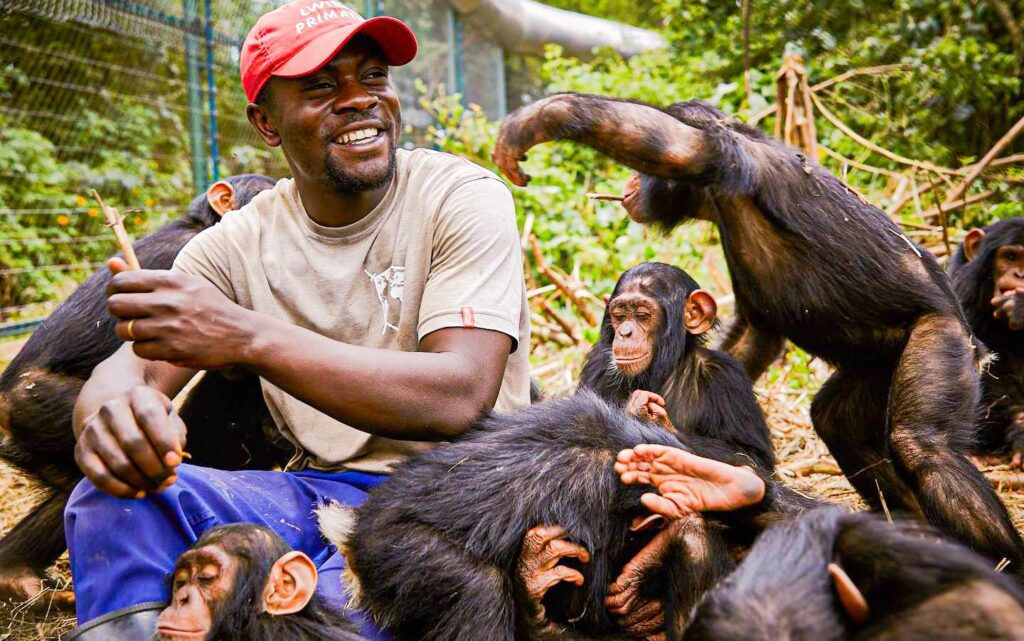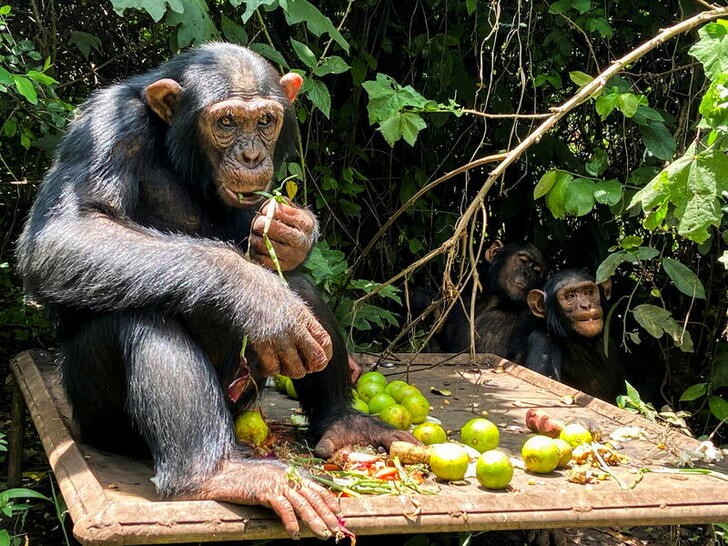Lwiro Chimpanzee Sanctuary Congo
Lwiro Chimpanzee Sanctuary Congo: The Centre de Recherché en Sciences Naturelles (CRSN) and the Institut Congolais pour la Conservation de la Nature (ICCN), two Congolese organizations, built the Lwiro Chimpanzee Sanctuary, also known as the Lwiro Primate Rehabilitation Centre (CRPL), in 2002. It was decided to provide a safe haven for orphaned monkeys to recover physically and psychologically from their ordeals during the Second Congolese War, which took place between 1998 and 2004. Poaching increased drastically during this time.

A long-term captive care facility with a focus on rehabilitation and conservation education requires the financial and technical resources of multiple partners. In order to assist with project management and development, Lwiro Chimpanzee Sanctuary in the Democratic Republic of the Congo promoted collaboration with non-governmental groups. A non-governmental group from Spain called Coopera came in 2006 to provide managerial and technical support. In 2016, the Ivan Carter Wildlife Conservation Alliance (ICWCA) assumed a leadership role in the refuge, and the following year, the Mountain Gorilla Veterinary Project (MGVP) joined forces to assume control of the veterinary division.
An important method of primate conservation in the Democratic Republic of the Congo is the Lwiro Chimpanzee Sanctuary in Kahuzi Biega National Park. We are now providing care for 108 monkeys from 13 different species and 92 chimpanzees that were all harmed by poaching or the pet trade.
Situated just 4 kilometers from Kahuzi-Biega National Park, the world’s third most important site for the protection of the Eastern Chimpanzee, Lwiro Chimpanzee Sanctuary in Congo is the perfect place for chimpanzee rehabilitation, local conservation education, and outreach.
Our primates and chimpanzees have adopted the role as representatives for their untamed kin. Approximately 4,500 people are impacted by the sanctuary’s education and awareness program each year. Lwiro Chimpanzee Sanctuary also engages in the following pursuits:
Concealed wildlife is carefully saved, restored, and released back into the wild.
Conservation and education about the environment
Initiatives related to cleanliness, health, and community development
Activities and Programs Associated with Research
Travel, both domestically and internationally Collaborations with national and international institutions
Chimpanzees and monkeys left without a home can find sanctuary at the Lwiro Primates Rehabilitation Centre located in Bukavu, South Kivu, Democratic Republic of Congo. Presently, the Lwiro Chimpanzee Sanctuary is home to around 100 monkeys and over 90 chimpanzees that were saved from illegal wildlife trade and poaching.
According to the Lwiro Rehabilitation Centre website, the sanctuary is engaged in a number of conservation initiatives, such as rescuing and rehabilitating wildlife, encouraging conservation in the Bukavu region, conducting conservation research, developing ecotourism, and utilizing collaborations with both domestic and foreign organizations.
Because the orphanage is close to Kahuzi Biega National Park, visitors trekking eastern lowland gorillas can stop briefly at the Lwiro Chimpanzee Sanctuary to learn about the orphanage’s conservation efforts.

Every chimpanzee resident was ruthlessly driven from their natural home by poachers. Dogs typically track down and shoot the group’s adult chimpanzees, whose flesh is then either eaten by the poachers or sold as meat in large cities or towns.
Young chimpanzees might fetch more money when sold as pets since they are too small to eat. It is against the law in the Democratic Republic of the Congo to keep monkeys as pets. Sometimes these young chimps might be caught while they are still being transported, allowing the Congolese Government Wildlife Authority (ICCN) to prosecute the poachers. After that, the baby chimps are taken to the chimpanzee sanctuary, where they will get lifelong care.
Sadly, the ICCN’s efforts to stop the trafficking of newborn chimpanzees are not always effective, and the infants are either sold into the pet trade or pass away while in transit. A juvenile chimpanzee kept as a pet frequently dies from lack of care. Even in the unlikely event that the chimp survives, the infant will sustain significant physical and psychological damage. The more damage a chimpanzee sustains, the longer it is housed in substandard conditions.
As long as there remains a wildlife trade in the country, the Lwiro Chimpanzee Sanctuary in Kahuzi Biega National Park in Congo will continue to provide the finest care possible for all of its residents. The chimpanzee sanctuary is still working in tandem with the ICCN and other local conservation groups to fight illegal wildlife trafficking and protect the area’s forests.
Orphaned chimpanzees are given a second chance at life at the Lwiro Chimpanzee Sanctuary in Kahuzi Biega National Park in Congo, which also ensures their safety in the wild. A great number of chimpanzee families perish, leaving the young orphans on the streets.
At this point, other conservation organizations such as Kahuzi Biega National Park, Virunga National Park, and other rescue teams intervene to bring the stranded orphan chimps to the sanctuary, where they can recover both physically and mentally from what they have experienced—since the majority of them have seen the actions of poachers on their families. To ensure the success of this sanctuary, non-governmental organizations (NGOs) have also joined the fight. Lwiro is an excellent resource for outreach, community conservation awareness, and chimpanzee rehabilitation.
The Lwiro Chimpanzee Sanctuary is listed as a World Heritage Site in Danger since 1997. This sanctuary employs about 46 people who are well-equipped to provide care and affection for the primates. Dedicated to the center’s success are the veterinary personnel, domestic assistance, cooks/chefs, chimpanzee caretakers, and monkey caretakers.
Professionals with extensive training and expertise, the caregivers at Lwiro Chimpanzee Sanctuary have been there since the first chimps arrived in 2002. In contrast to humans, who only need three meals a day, the cooks at Lwiro prepare a healthy diet for every animal, including the chimpanzees and monkeys, who need six meals a day.
The foundation of the Lwiro Chimpanzee Sanctuary in the Congo‘s Kahuzi Biega National Park is the team of two veterinary physicians who work around the clock to protect the health of the monkeys. Because the sanctuary is home to both monkeys and chimpanzees, each group of animals has a dedicated group of caregivers who spend a great deal of time observing, adoring, and making sure the chimps and monkeys at Lwiro Chimpanzee Sanctuary receive the best possible care and attention.
The route to Kahuzi Biega National Park’s Lwiro Chimpanzee Sanctuary.
Being the only chimpanzee sanctuary in the Democratic Republic of the Congo, Lwiro has drawn the interest of many tourists, who have found it easy to travel there thanks to the efficient transportation networks and available modes of transportation.
Depending on your schedule and budget, you can choose to travel by car or airplane to go to the Lwiro Chimpanzee Sanctuary in Congo. Travelers may travel from Bukavu to the sanctuary in about an hour because it is close to the Kahuzi Biega national park. From Kigali, you will take a charter flight to Bukavu, from where you will take a car to the monkey sanctuary.
